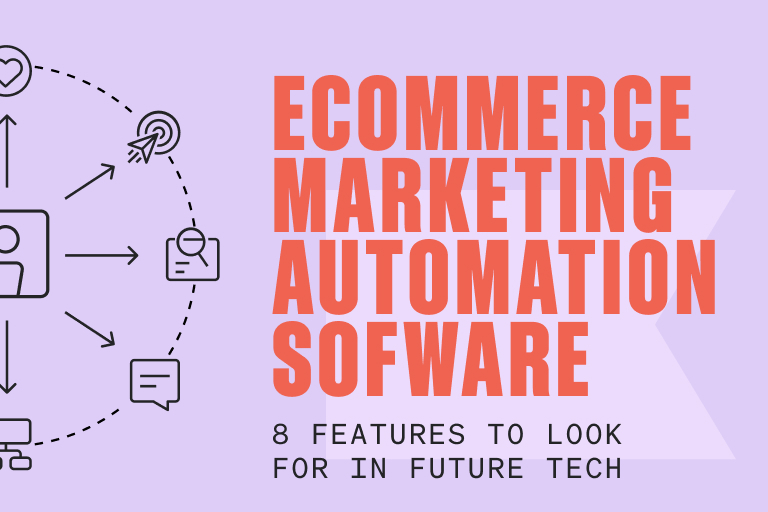11 ecommerce marketing trends that led to email and SMS growth in 2023
Email lists and SMS lists are just that.
In ecommerce marketing, owned assets that bring in measurable revenue are few and far between.
Just look at Black Friday weekend in 2022. Ecommerce revenue in general grew for Shopify merchants:

But ecommerce revenue from owned channels grew faster. Klaviyo users brought in $2.2Bin revenue this year with email and SMS marketing—up 46% from last year. Total Shopify revenue, by comparison, grew 19%.
SMS-driven revenue grew even more rapidly, tripling year over year, according to Klaviyo data.
And owned channels will need to continue driving growth in 2023. Customer acquisition costs on paid channels have risen—and it’s one of the biggest challenges in ecommerce, according to Obvi CMO and co-founder Ash Melwani.
“We’re spending more to acquire fewer customers,” Melwani says. “It hurts the bottom line.”
We’re spending more to acquire fewer customers. It hurts the bottom line.
Innovative owned marketing can—and must—keep brands out of the red.
So what specific SMS and email marketing trends will win big in in the year ahead? Here are the predictions 20+ boots-on-the-ground ecommerce operators see for this year—including realistic tactics you can implement to improve your strategy now.
1. Segmentation that goes beyond the basics
Advanced personalisation will be a key to ecommerce messaging success in 2023.
In that spirit, “brands will dive further into their customer data to build more robust and segmented marketing automations across email and SMS,” says Jeremy Horowitz, senior partner marketing manager at Gorgias.
Here are 3 key variables our experts recommend segmenting on:
Quiz results
Haircare brand Living Proof does this already, using zero-party data from a Typeform quiz (and Klaviyo’s Typeform integration) to segment their audience based on hair type.
As marketers continue to adapt to Apple’s 2021 privacy update, more and more of them will collect data by asking customers for it directly.
Location
In 2022, 56% of brands planned to start fulfilling orders from new countries, ShipBob reports. In the coming year, email teams will need to segment by country, hemisphere, and more.
This helps prevent kooky email mishaps, like “sending emails at odd hours of the night, referring to a summer sale when it’s winter, not specifying currency—the list goes on,” says Kristina Lopienski, ShipBob’s director of content marketing.
Purchase history
Horowitz recommends segmenting by first and first and last product purchased, as well as purchase recency, frequency, and price. This tactic helps teams nurture existing, high-value customer relationships, and “will separate the brands that survive 2023.”
Ultimately, these types of advanced segmentation strategies “make the customer feel that the email or SMS was just for them,” says Blair Peterson, VP of strategy at Dana Rebecca Designs, and “answer questions that they have been thinking”—even if they’ve yet to ask them out loud.
2. AI as a marketing assistant
Since ChatGPT launched at the end of 2022, it’s hard to find marketers talking about anything but artificial intelligence. Some marketers are already devising ways to leverage AI as an assistant in their day-to-day tasks.

In 2023, AI will go beyond being one of the latest trends in technology and take on a much bigger role in ecommerce marketing workflows as:
A creator
It’s the end of the blank page. In 2023, AI like ChatGPT, Dall-E, Jasper and Klaviyo’s SMS assistant will generate first-draft marketing creative, from ad and landing page copy to email subject lines, graphics, CTA variations, and much more.
Humans can punch it up a lot faster than they can start from scratch.
A concierge
AI will analyse purchase and behavioural data, and help ecommerce brands send personalised product recommendations via email and SMS.
“This not only reduces manual work for brands but creates a cohesive experience for the customer and helps capture repeat purchases,” says Bonnie Pecevich, director of product marketing at Pantastic.
A stylist
Like the rest of machine learning, “visual intelligence is getting smarter,” says Jan Soerensen, general manager, North America at Nosto. In 2023, AI that can recognise similar, complementary, and clashing visual styles could change the game for fashion, home goods, and art retail. “This will allow them to recommend products that are visually similar to the shoppers’ browsing history” in “You Might Also Like…” email widgets, Soerensen predicts.
Marketers who haven’t yet used AI should begin to experiment with the free tools at their disposal to see how they can use them to bolster their ecommerce efforts.
3. A tighter rein on shipping fees
Consumers expect free shipping when they shop online. Right?
Well, for now. Free shipping is expensive for brands, especially small ones: Back in 2020, The Atlantic’s Amanda Mull wrote that free shipping could be “the thing that breaks mom-and-pop retail for good.”
And as merchants mull over how to make the DTC business model work for their brand, anything and everything is up for debate.
In 2023, plenty of brands will respond to “razor-tight margins” by reducing availability of free shipping and free returns, predicts Bogar Alonso, head of outbound marketing for ecommerce at Wix.
You might see more:
- Free shipping only for orders of a certain size
- Free shipping only for subscribers
- Flat-rate shipping for all orders
But if you’re worried about how this might affect the customer experience, you’ll be relieved to find out that consumers might not mind as much as we think.
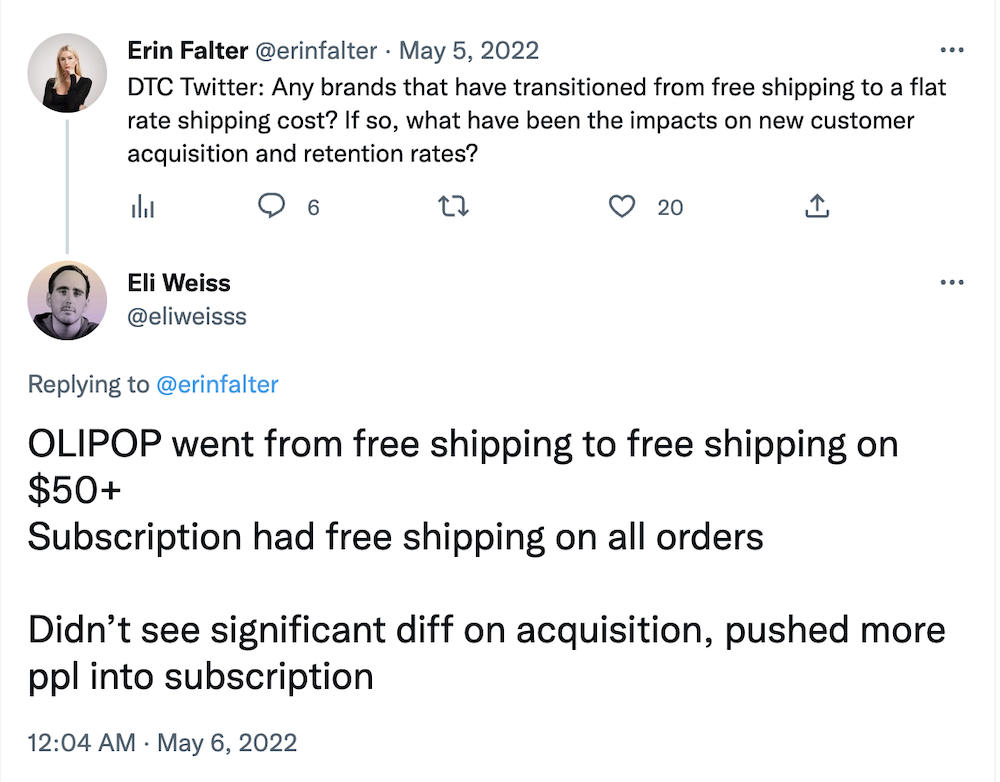
Wondering whether nixing free shipping could negatively impact your retention rate? Consider surveying your customer base beforehand, and get a pulse on how much free shipping and returns affects their perception of your brand.
4. Video everywhere
Video sells.
On social, the #TikTokMadeMeBuyIt hashtag has 33.5B views and counting—and video will only become more ubiquitous across all social channels in 2023, our experts predict.
“Video allows a brand to be more humanised,” says Kymber Heinze, social media operations manager at SmartSmites. “Through video, you can show a potential customer what they will receive and how they will benefit from your products rather than just writing about it.”
In 2023, video will crop up more on product description pages. “I’ve been noticing more brands embedding TikTok-style reviews or how-to-style videos to their PDPs, using tools like Videowize,” says Troy Petrunoff, retention and lifecycle marketing manager at Every Man Jack.
Brands will also integrate demo videos, virtual-try-on functionality, and other types of interactive content into their product pages, Peterson predicts: “Creating an interactive experience and being able to show the product in action will convert at a higher rate than solely static images.”
Because marketers will continue to look for ways to reuse and repurpose successful content, we’ll even start to see videos in email content. Sure, you can’t embed long-form video directly in an email, but you can still:
- Embed GIFs.
- Embed video screenshots.
- Link to full videos.
5. Community-building on social and beyond
“Proper community-building will be all the rage,” says Alonso. “A flourishing brand community can offer immense wealth to brands in the forms of lowered CAC, improved product development research, and longer-lasting brand affinity.”
A flourishing brand community can offer immense wealth to brands in the forms of lowered CAC, improved product development research, and longer-lasting brand affinity.
Community-building done right cultivates a truly engaged audience, says Natalie Sportelli, Thingtesting’s head of content. Not just followers, but fans.
You can tell it’s happening when members do two core things:
- Engage actively. That means DMing the brand or commenting on posts, instead of passively viewing or liking.
- Connect with each other. Sportelli believes that “the way to measure a good community is: Are they answering each other’s questions? Do they meet each other?”
Successful community managers encourage these behaviours by amplifying and responding to user activity. They might repost screenshots of funny interactions between members, reply to DMs and comments, or act on product feedback.
“They’re very hands-on,” Sportelli says. And more ecommerce brands will look to cultivate communities in this way in the new year.
If you’re trying to decide where to build a community, it really depends on your brand and your audience. Ecommerce brands have built community successfully:
In a private group
Obvi has built a 60K-member Facebook group they use for product feedback and flavour inspiration. “We really nail our product by listening to the customers,” Melwani says. Other private group options include a Slack channel, a Geneva group, or a Discord server for top customers.
On social media
Tinned fish retailer Fishwife has built a community on Instagram that Sportelli loves. The brand focuses on a mix of user-generated content featuring their customers, tasty recipes that include tinned fish, and lifestyle content often highlighting the brand’s team members.
“It’s super relatable and not so serious, and I love their collaborations and content,” she says.
Via paid membership
Lululemon recently launched a paid community for owners of its smart workout mirror—members get unlimited access to virtual and IRL classes and events, and Lululemon gets recurring monthly revenue.
“The key to finding success with this model is providing tangible value to customers and not creating this exclusive experience at the expense of the rest of your customer base,” says Kathryn Browning, senior marketing manager at JustUno. “Don’t make one CX crappier for the sake of another.”
In a forum
If you visit Love Wellness’s website, you’re likely to stumble across The Love Club, the brand’s very own community forum dedicated to women’s wellness and personal care. Founder Lauren Bosworth “realised there was an opportunity not just to create a space for our consumers, but for people in general,” says Kacey Langston, senior director of community at Love Wellness.
In the end, building any kind of real, active community is tricky. Brands need to consistently provide value—whether it’s through aesthetic fishy flatlays or flash sales—and prove they’re listening.
“Consumers need a really good reason to want to be loyal,” Sportelli says.
But ecommerce companies that build community have a huge moat around their brands. “The returns are endless,” Alonso says.
6. CTAs to save contact cards via SMS (thanks, iOS 16!)
This year’s iOS 16 update may not have made the same splash as iOS 14.5 or iOS 15, but there was one major change for SMS marketers: Users can now mark texts from unknown numbers as “Junk” much more easily.
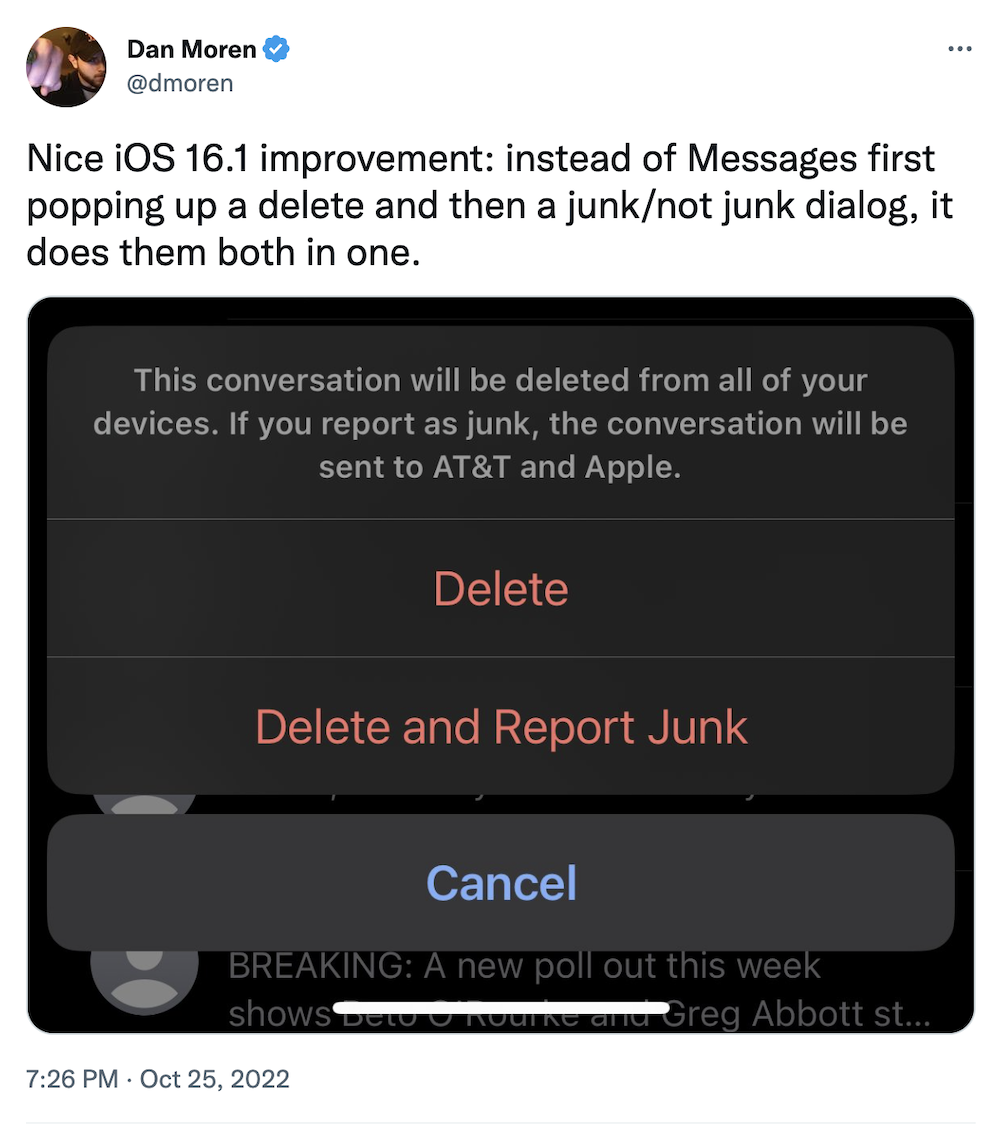
That means in 2023, SMS marketers will need to ask subscribers to save brand phone numbers as contacts more directly—and more often.
Instead of a hindrance to your SMS strategy, think of this as an opportunity. Contact cards allow subscribers to instantly identify your brand in their text inbox so they don’t get lost in the noise.
Getting customers to take the desired action requires the right incentives, though.
“Brands will need to make a real effort, leveraging rewards and loyalty programs to get that save,” says Kathryn Browning, senior marketing manager at JustUno.
Don’t wait to increase your brand’s recognisability over text—get a jump on this trend with virtual contact cards for Klaviyo SMS.
7. Trustworthy tracking and back-in-stock messages
“The customer’s experience doesn’t end when they click ‘Buy,’” says Krish Iyer, VP of strategic partnerships and industry relations at ShipStation’s operating brand Auctane.
The customer’s experience doesn’t end when they click ‘Buy,’
There are two key transactional messaging occasions after that—and both could use an upgrade.
If the item’s in stock: tracking updates
In 2023, Iyer sees more brands jumping on the opportunity to send strong, branded messages about shipping and delivery processes with transactional emails and texts. They might do it by:
- Displaying delivery date estimates at check-out
- Sending a tracking link with order confirmation
- Sending automated delivery updates via email or SMS
This can save ecommerce brands money on replacement products—in the past year, 260M packages got stolen off porches—but more importantly, it’s a customer experience win.
“A positive (and transparent) experience will help brands build loyalty among their customers,” Iyer says.
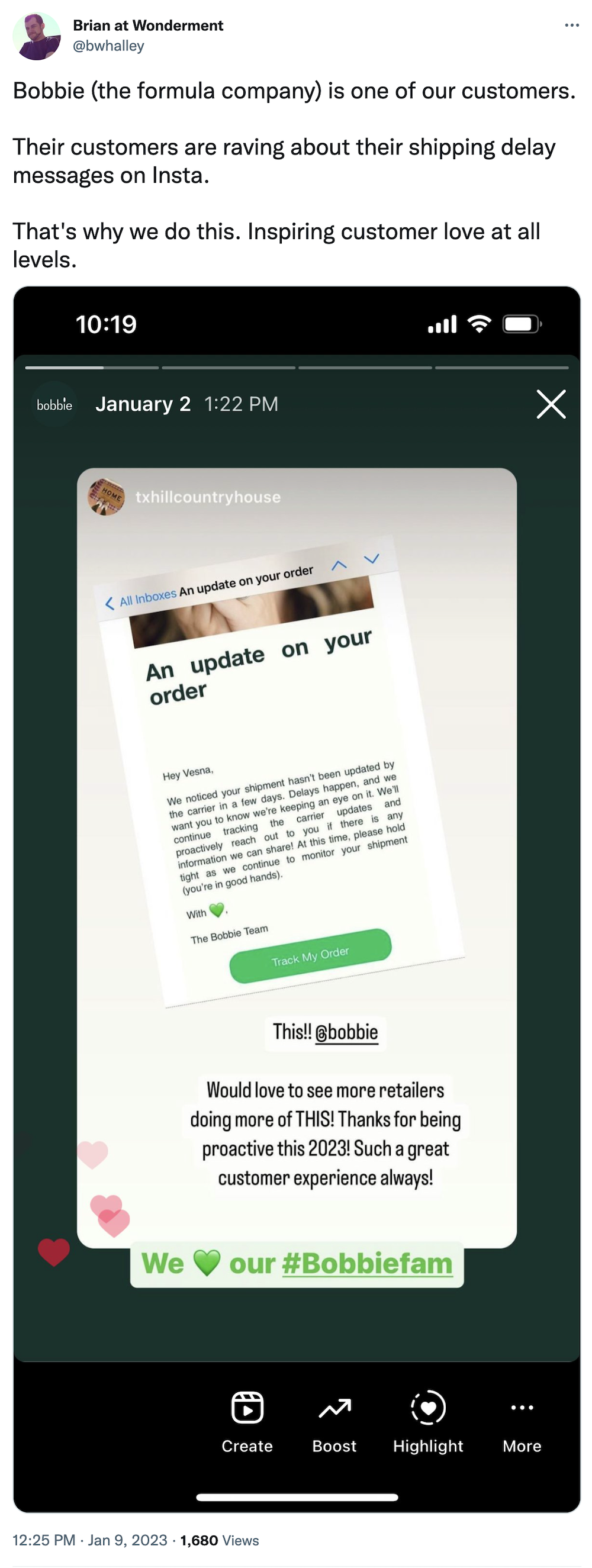
If the item’s out of stock: back-in-stock emails
As a self-described “online shopping fiend,” Alonso gets a lot of disappointing back-in-stock emails that either:
- Claim an item’s back in stock when it’s not yet
- Link out to an item that’s not exactly what he needs
It’s “a waste of a high-intent click,” he notes—and he sees more brands updating their processes around back-in-stock in emails in the new year.
“Recent supply chain issues have only brought more attention to this pain point,” Alonso says. “We’ll see this getting more attention in 2023.”
8. More innovative ways to connect with customers using SMS marketing
CTAs to opt in to SMS messaging will pop up everywhere in 2023.
This trend already started in 2022, and Ashley Ismailovski, CRO operations manager at SmartSites, sees it picking up steam in 2023 alongside increased adoption of SMS marketing.
She predicts that popular spots for SMS opt-in CTAs will go omnichannel and include:
- After check-out (either in-store or online)
- On a on-site retail display with a QR code
- In an email marketing campaign
- As part of a larger digital marketing campaign
- On social media
Some email subscribers might even appreciate the option to subscribe to SMS alerts instead of emails, or choose a channel where they’d like to receive more communications.
“A growing volume of online shoppers prefer to receive SMS messages from brands they like over emails,” Ismailovski says.
And Klaviyo’s SMS marketing consumer sentiment report backed Ismailovski’s theory, with 29% of participants responding that SMS is their preferred form of communication from brands.
9. Acquisition-specific onboarding
In 2023, more and more brands will move away from the single, all-purpose customer experience. Instead, they’ll shift to a constellation of personalised ecommerce journeys, each tailored to a different acquisition channel.
One way marketers have already put this into practice is onboarding new customers that come in through partner and influencer campaigns.
Marketing consultant Grace Clarke calls it giving customers “a soft landing,” consistent with their sign-up experience.
“I would never do a partnership with an email capture without giving someone a different welcome email experience,” Clarke adds.
DTC clean skincare brand AnnMarie Skincare, for example, has a custom welcome flow for every influencer on their roster. These flows all feed into a single massive up-sell flow, so they can get maximum statistical significance from their CRO testing.
Meanwhile, DTC candle retailer Snif recently partnered with food creator Tieghan Gerard of Half Baked Harvest on a candle and influencer campaign—and doubled their email list.
They not only gave new subscribers from the partnership a custom welcome flow—the team is also giving that cohort a custom lifecycle marketing strategy. Forever.
“We have our original Snif subscription list, and then we have all of these people that came to us because of Tieghan, and we have to talk to them in a different way,” says Bryan Edwards, co-founder and co-CEO at Snif.
10. Seamless CX from a fully integrated tech stack
“Optimising customer experience will overtake paid acquisition as the new growth model as brands shift to profitable and sustainable growth,” says Horowitz.
With customer acquisition costs rising on paid channels, profitable growth for ecommerce brands increasingly requires a flawless customer experience. Customers need to want to buy again. And again.
This pays, literally, for two reasons:
- Repeat customers spend more. Gorgias surveyed 10K customers and found that, on average, repeat customers drive 4x more revenue than first-time buyers, Horowitz says.
- Repeat customers unlock profitability. For apparel brands, for example, a shopper isn’t profitable until they make 4 purchases, the Gorgias research team has found.
So how do you create loyalty-worthy CX that results in better retention retrics? Ecommerce brands need:
Integrated tech stacks
“Brands need their apps to play nice to create the personalised CX that customers have come to expect,” says Browning.
“Zero- and first-party data is only as strong as the ability of the tools collecting it to share.”
Zero- and first-party data is only as strong as the ability of the tools collecting it to share.
Tech used cross-functionally
At AnnMarie Skincare, it’s not just the marketing team that uses Klaviyo. The sales and customer service teams also review customers’ profiles in the Klaviyo CDP on calls, for additional context and customisation.
In 2023, this will be a more and more popular set-up to better customer engagement.
Shopping your own store
Ari Murray, VP of growth at Sharma Brands, does this constantly—it’s a great way to assess how all your CX efforts come together, big picture.
“It’s shocking how people will focus on smaller details before they’ll remember or really take a second to look at the 17 clicks that your customer had to take to even become your customer,” Murray says.
In 2023, a solid user experience will no longer be a nice-to-have—it’ll be table stakes for brands as “consumers are thinking twice before spending their money nowadays,” according to Joanne Coffey, assistant manager of retention marketing at Jones Road Beauty. “Brands need to focus on customer service and the experience that is offered on all channels.”
11. Human-first communications
In 2023, more ecommerce messaging will sound friendly, casual, and human—like consumers’ email and text conversations with their real friends.
In email, this might look like text-based messages, like this one from sneaker retailer Atoms:
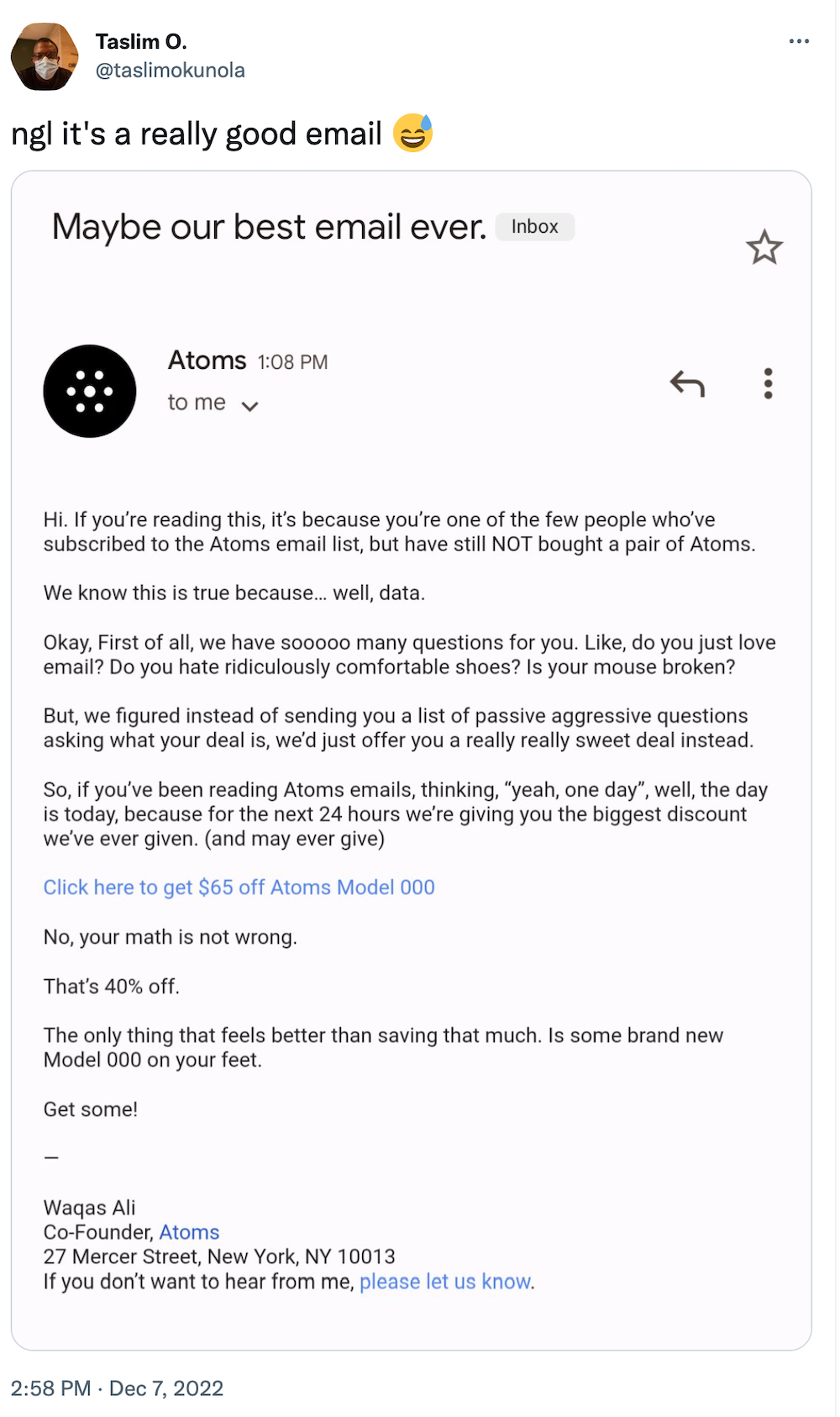
Our friends, family, and colleagues don’t send us highly designed, templated emails—similarly, brands will begin to replicate these patterns. And while there will always be a place for beautiful email design, marketers will integrate more conversational-sounding messages into their broader ecommerce email marketing strategy.
In SMS, “the most innovative brands are sending out texts that feel like they’re a 1:1 message, with maybe a selfie and a sign-off from the employee’s real name,” Petrunoff says. “It’s similar to how UGC tends to perform better than highly produced creative in ads. That natural element feels more trustworthy.”
That’s the key reason this style works: It builds trust. It comes across as authentic.
“We’ve all seen the email trend of adding “Re:” in the subject line,” says Coffey. “Sure, these probably have fantastic open and conversion rates, but at what point are we sacrificing authenticity for a quick sale?”
At what point are we sacrificing authenticity for a quick sale?
In 2023, operators foresee less clickbait and more conversational messages to increase open rates and email click-through rates.
Owned marketing is the path forward
The ecommerce industry is constantly changing. And more often than not, those changes are beyond our control.
They could be happening because of broader global, societal, or economic events, like a pandemic or inflation. Or they could be the result of changes to platforms you’ve come to rely on to grow your business, such as data privacy updates and mail privacy protection.
Regardless of the source of change, it’s nerve-wracking to go into a new year with the realisation that it’s impossible to accurately predict what will happen—and how it will affect your ecommerce store.
But there’s one thing you do have control over: your owned marketing channels.
By focusing on the growth of your subscriber lists, the strategy behind your email and SMS programs, and your relationships with your customers, you’ll be set up to succeed—no matter what 2023 throws at you.
Email marketing trends FAQs
How can I prevent my emails from ending up in spam folders?
Some of the best ways to avoid spam filters include:
- using a reputable email service provider
- obtaining permission from subscribers
- avoiding spam trigger words
- optimising your email subject line
- segmenting your email list
- personalising your emails
- regularly testing and monitoring your email newsletters and campaigns.
What are the benefits of following email marketing trends?
Following email marketing trends can provide several benefits, including improved engagement with the audience, better targeting through hyper-personalisation and email automation, increased ROI by implementing best practices in email design trends, gaining a competitive advantage over other businesses, and building stronger relationships with customers by delivering value through interactive email marketing.
How can businesses make sure they are keeping up with email marketing trends?
You can keep up with email marketing trends by subscribing to industry newsletters and blogs, attending industry events and webinars, conducting market research, monitoring email metrics and analytics, looking at email templates, and experimenting with new ideas in your email marketing campaigns. Look into automated emails, carousels, animations and optimisation for mobile devices. By doing so, you can stay informed about the latest trends and best practices, adapt your strategy accordingly, and continue to improve your email marketing efforts over time.

